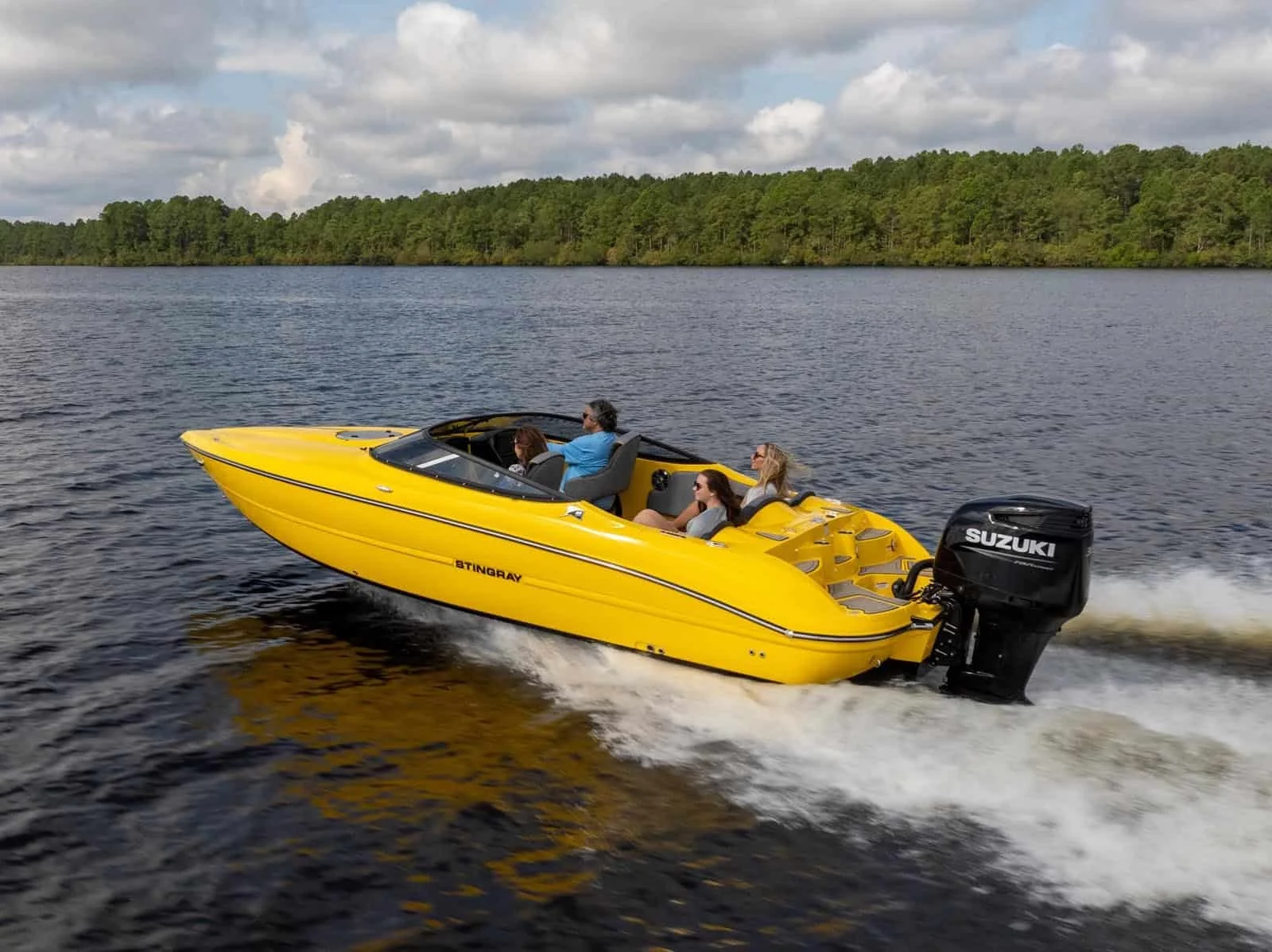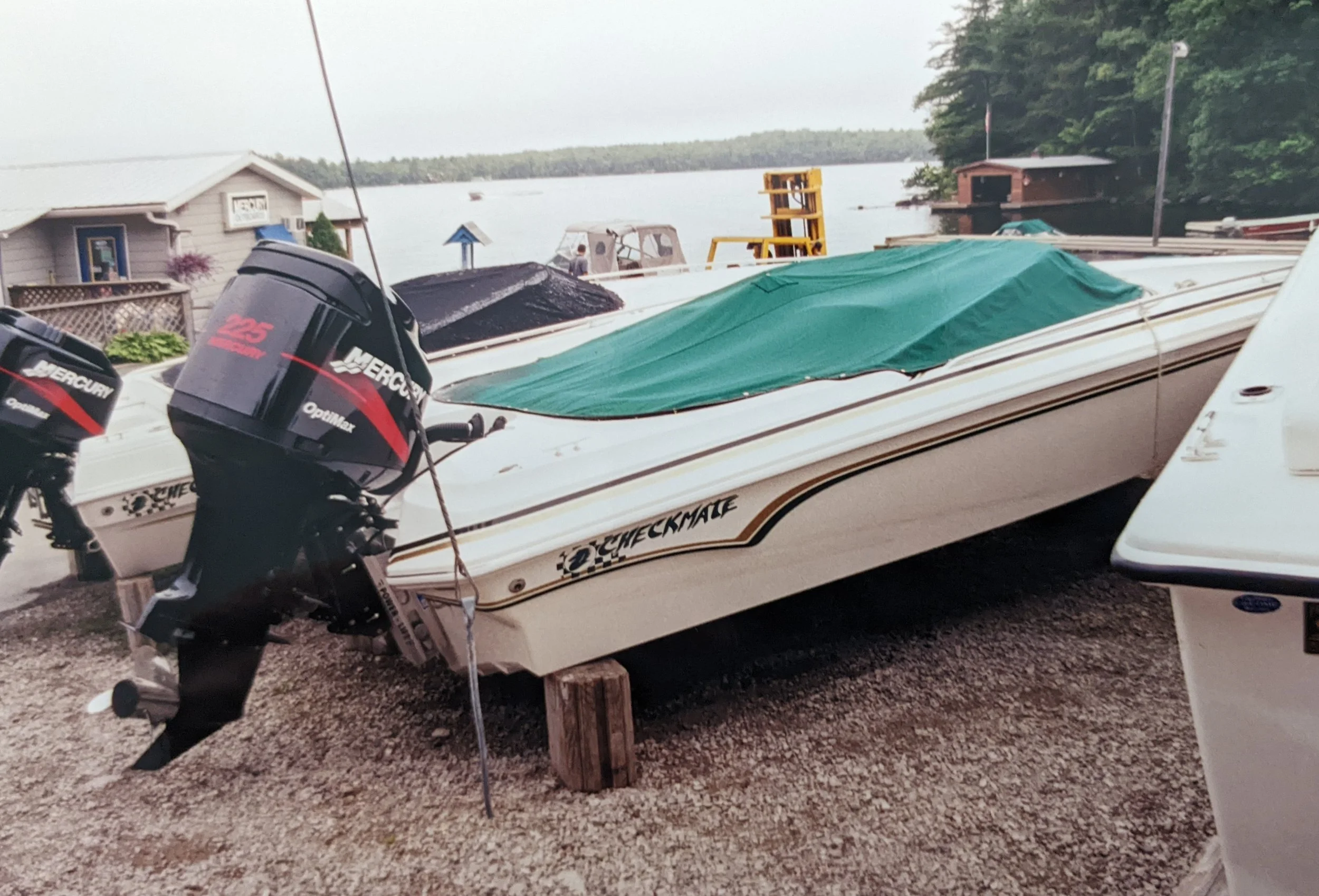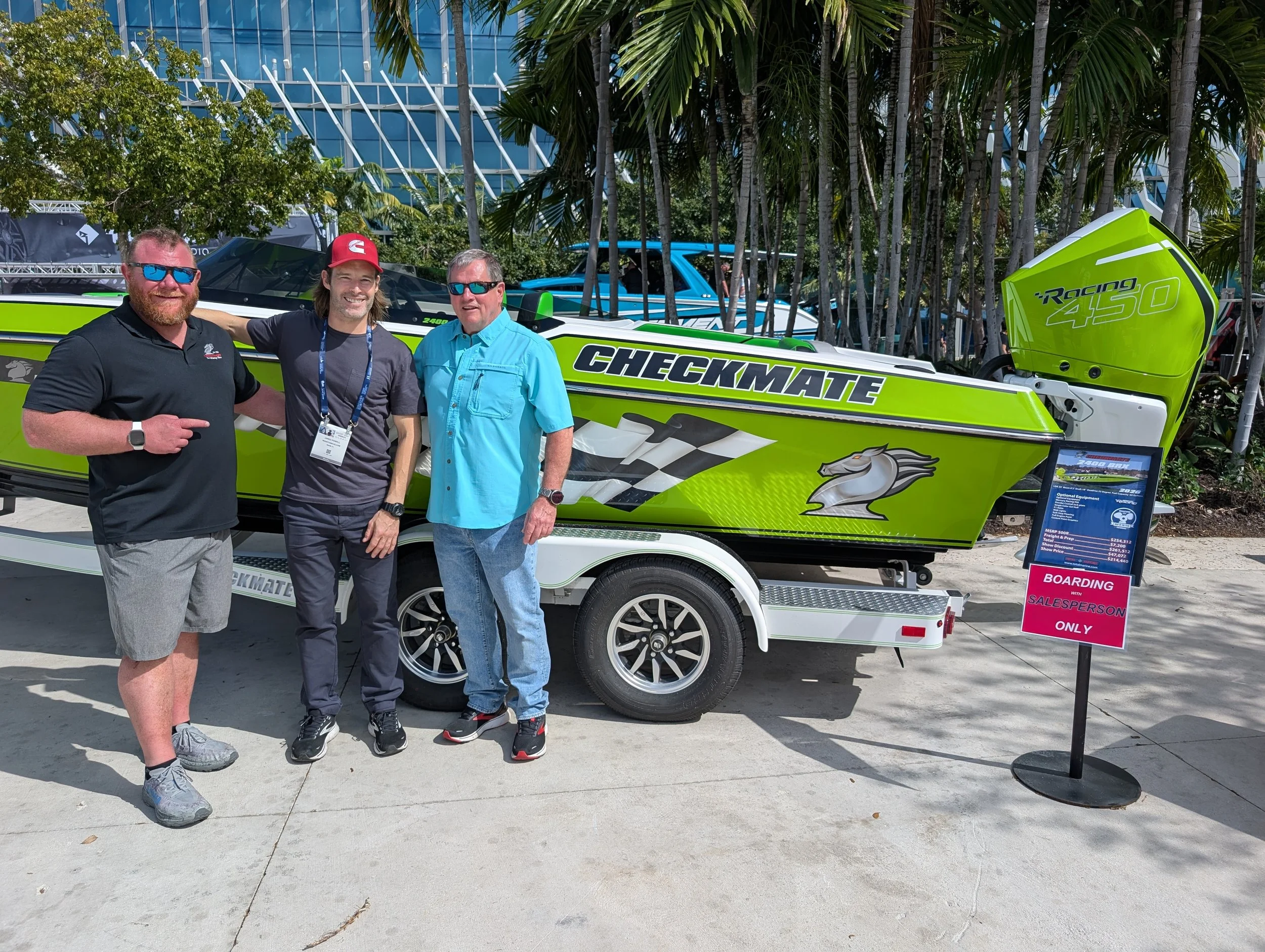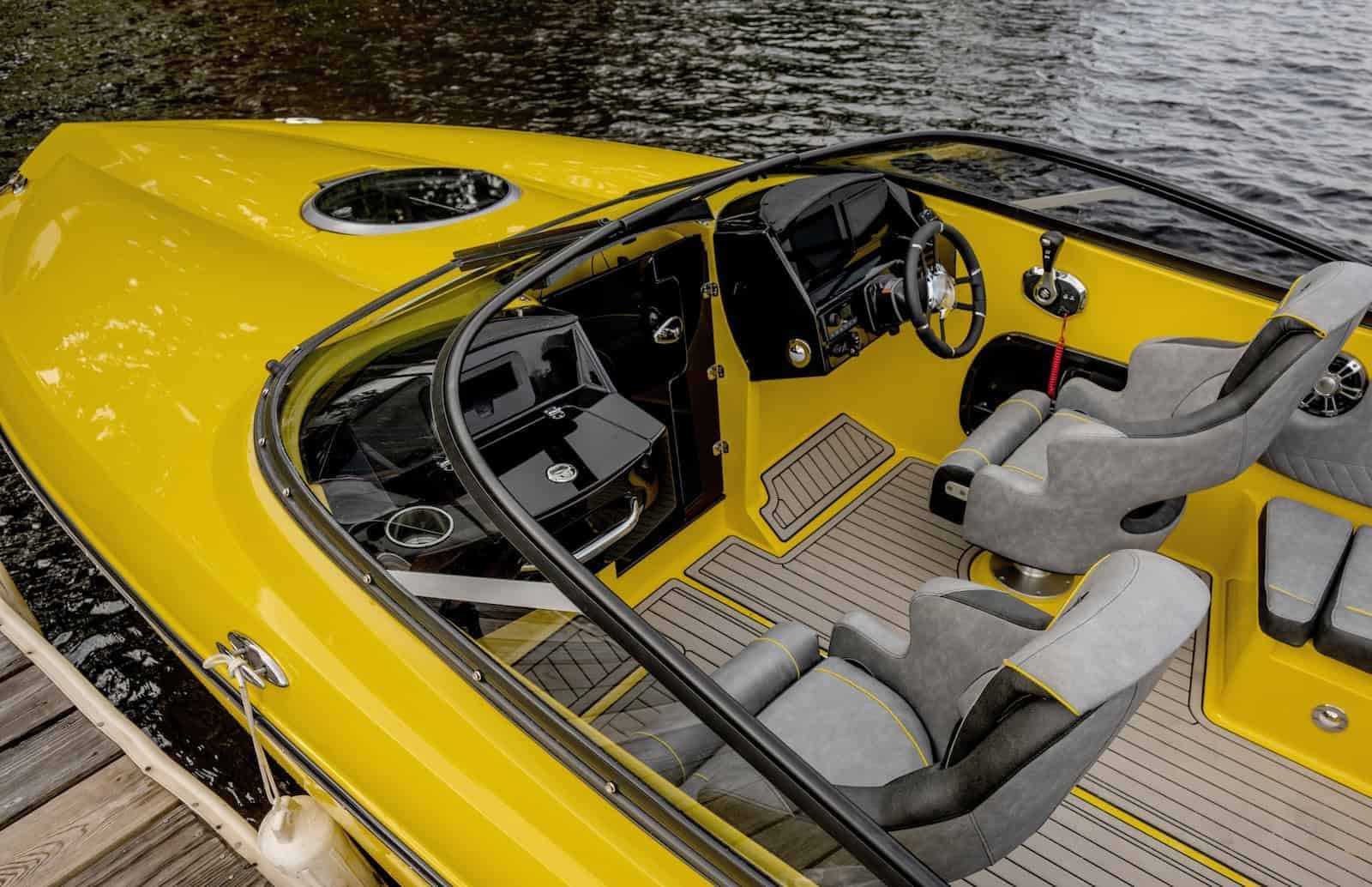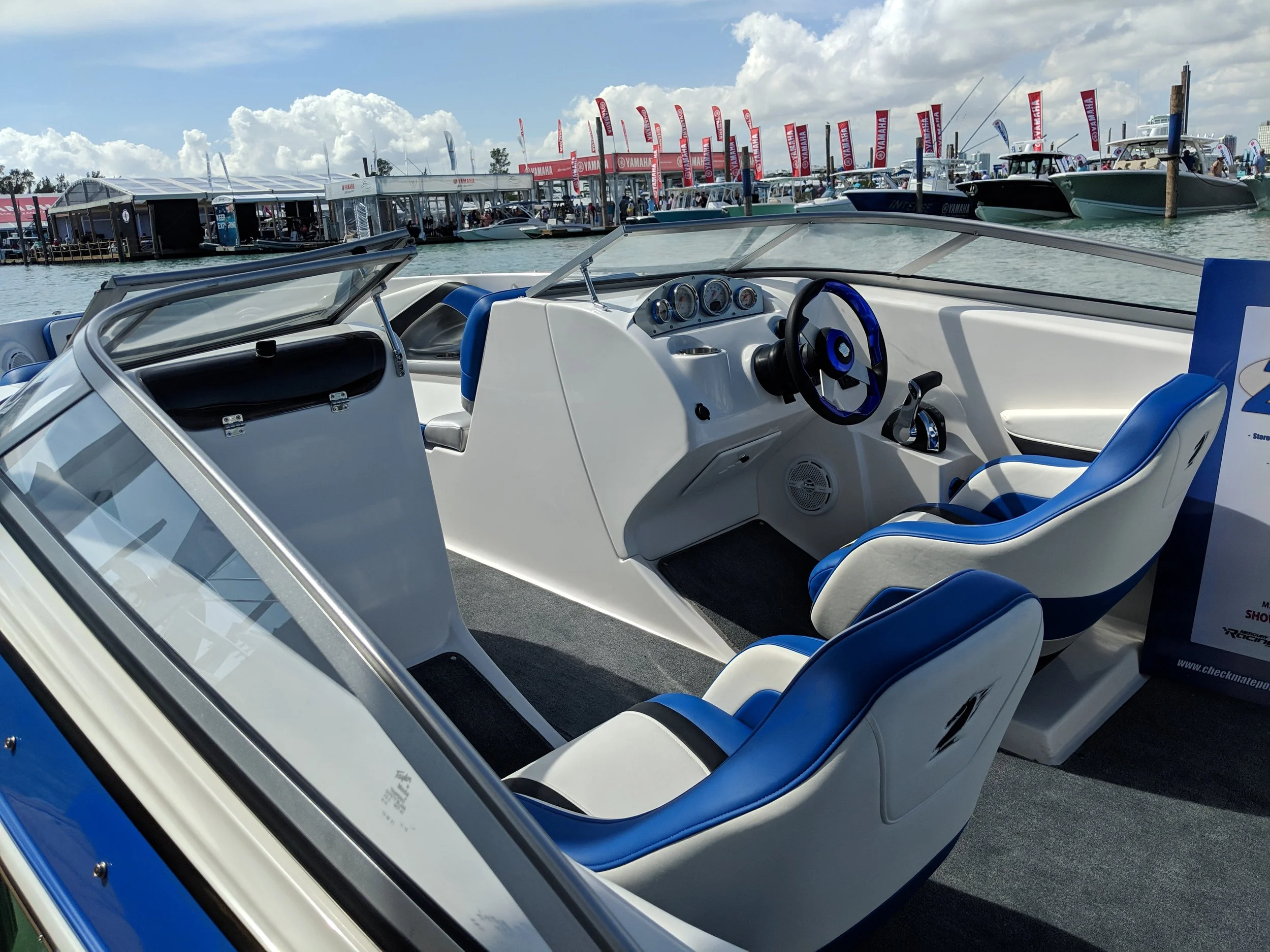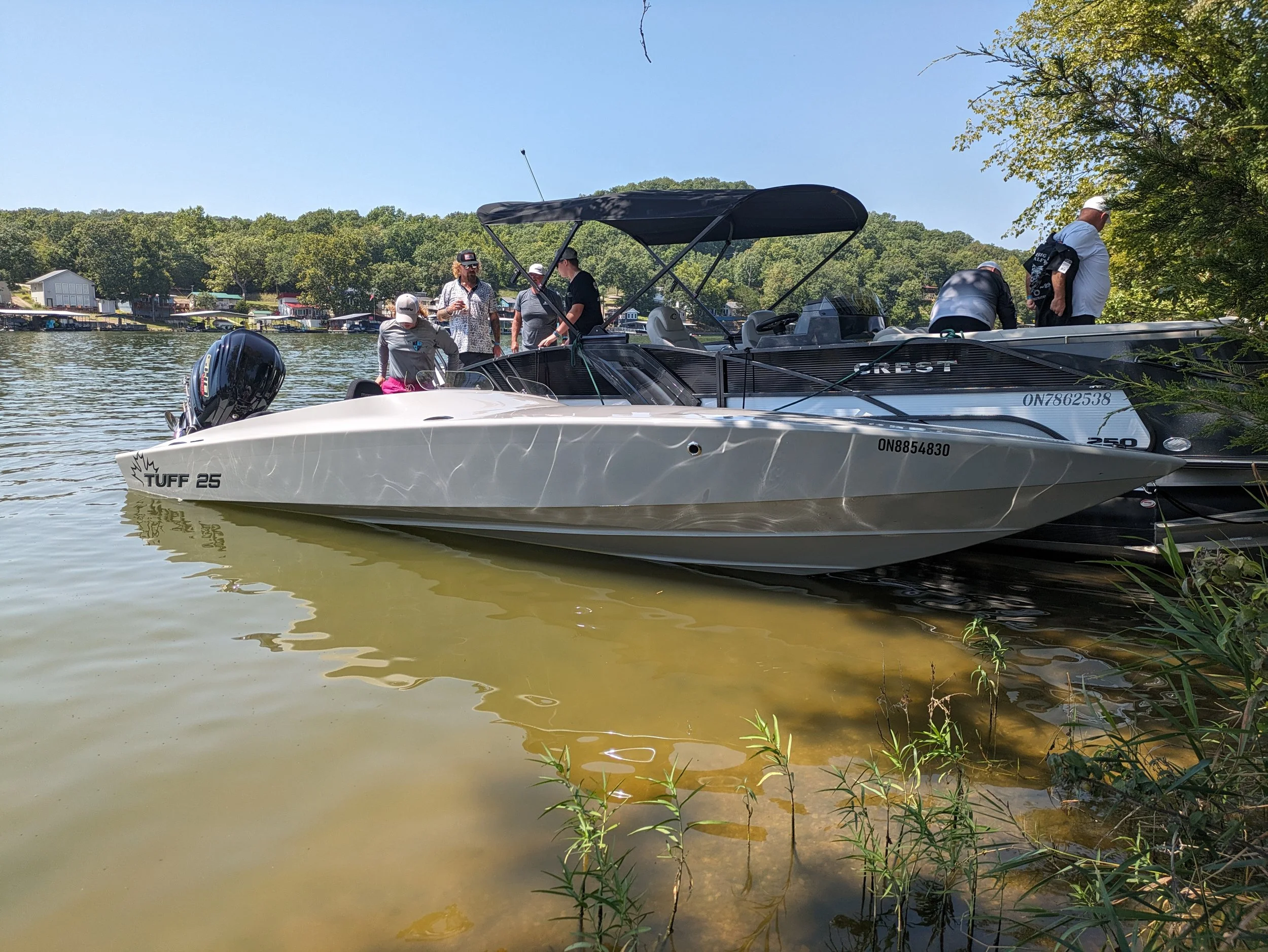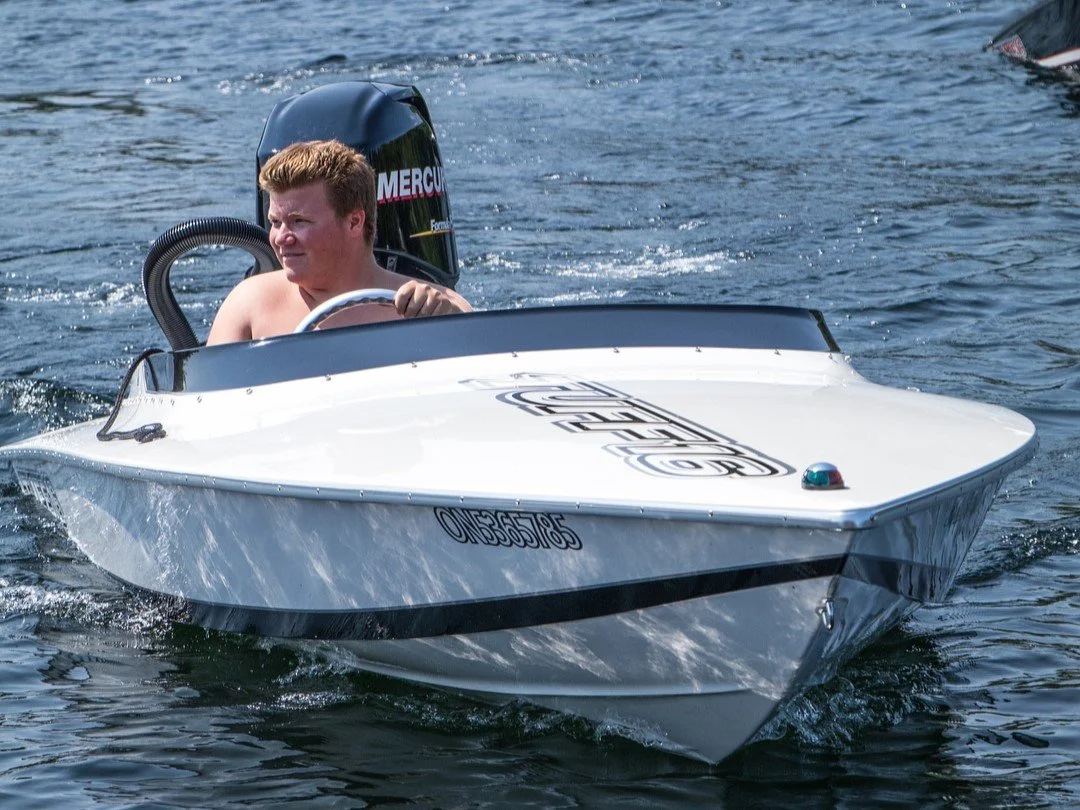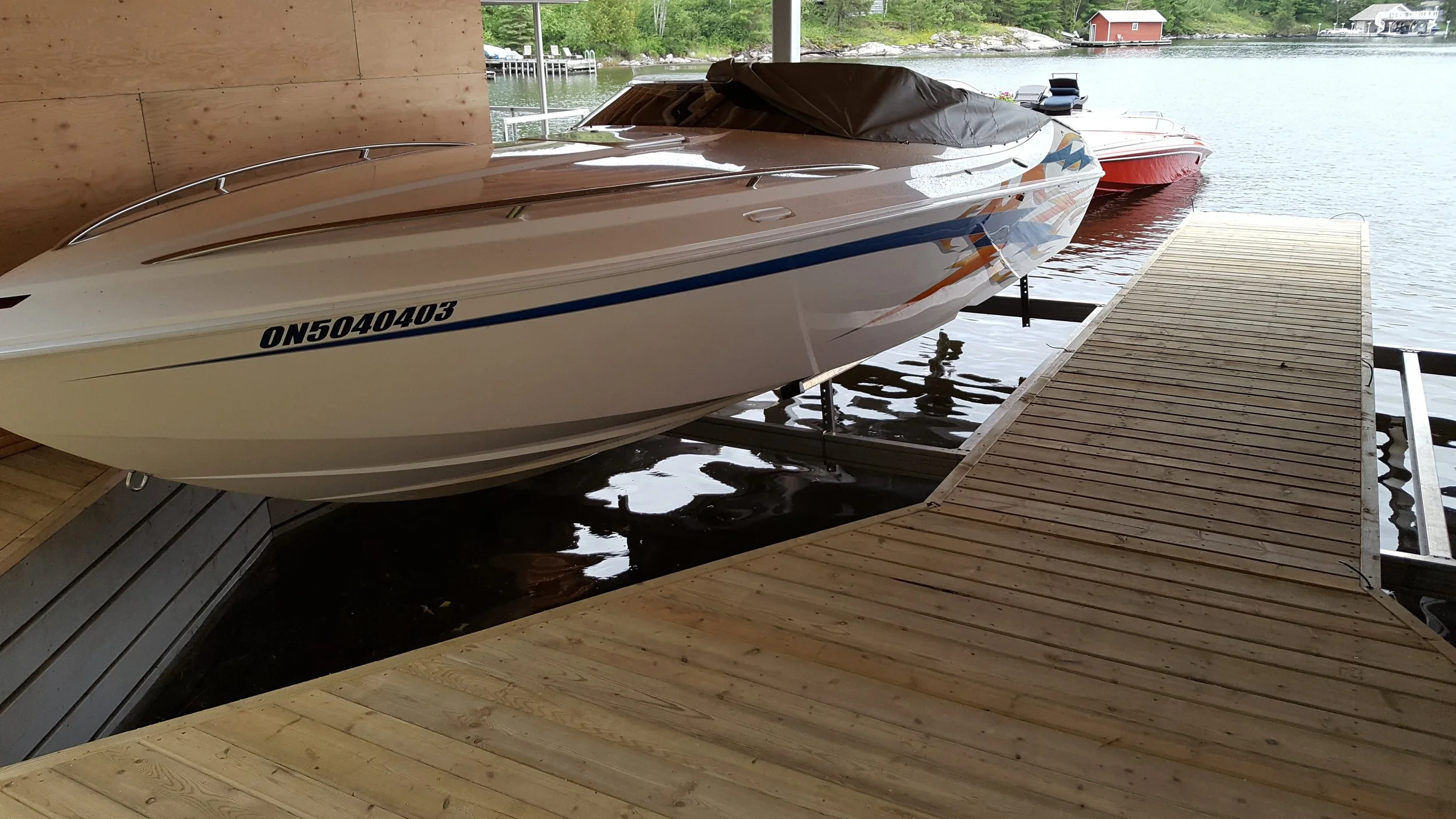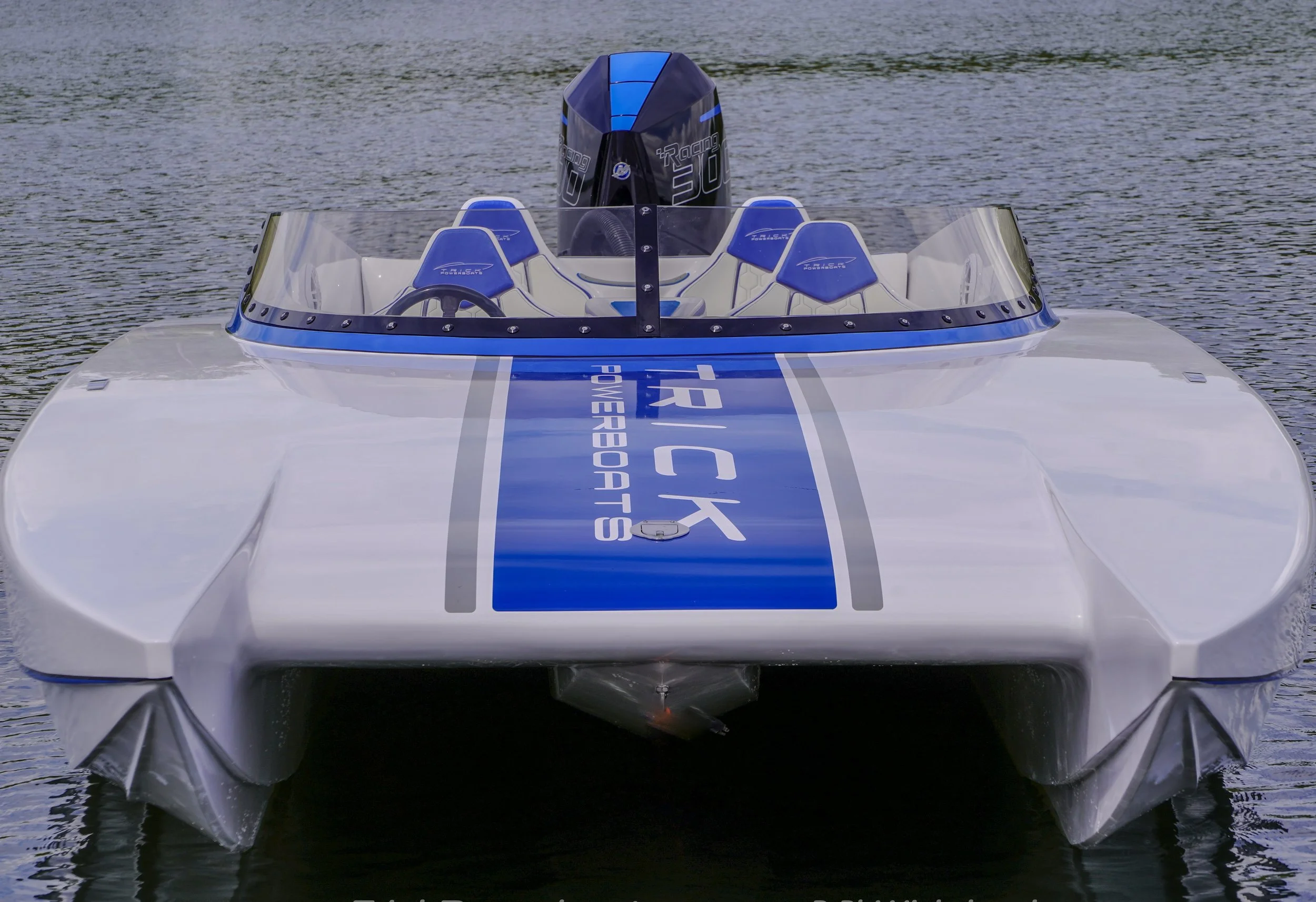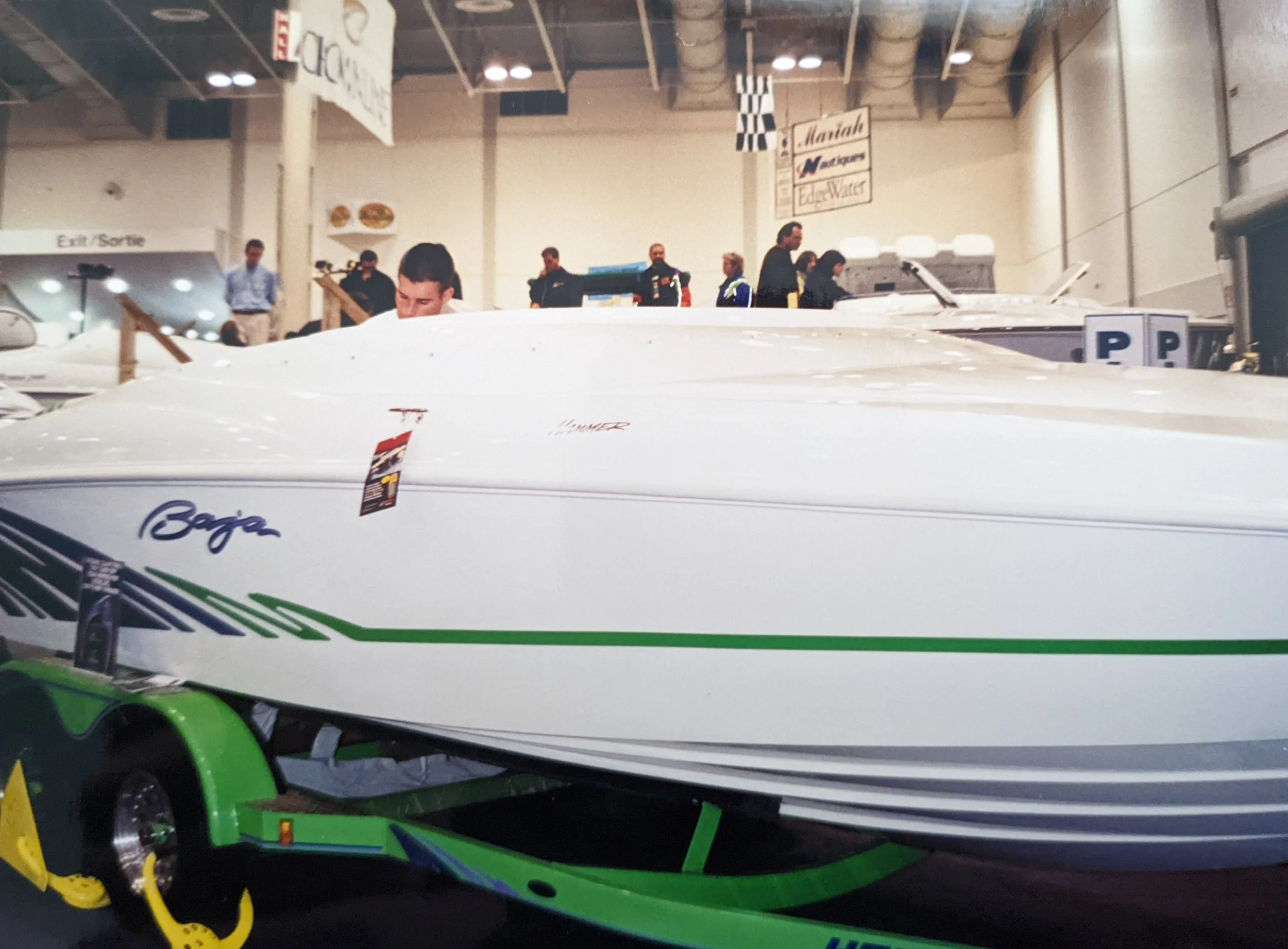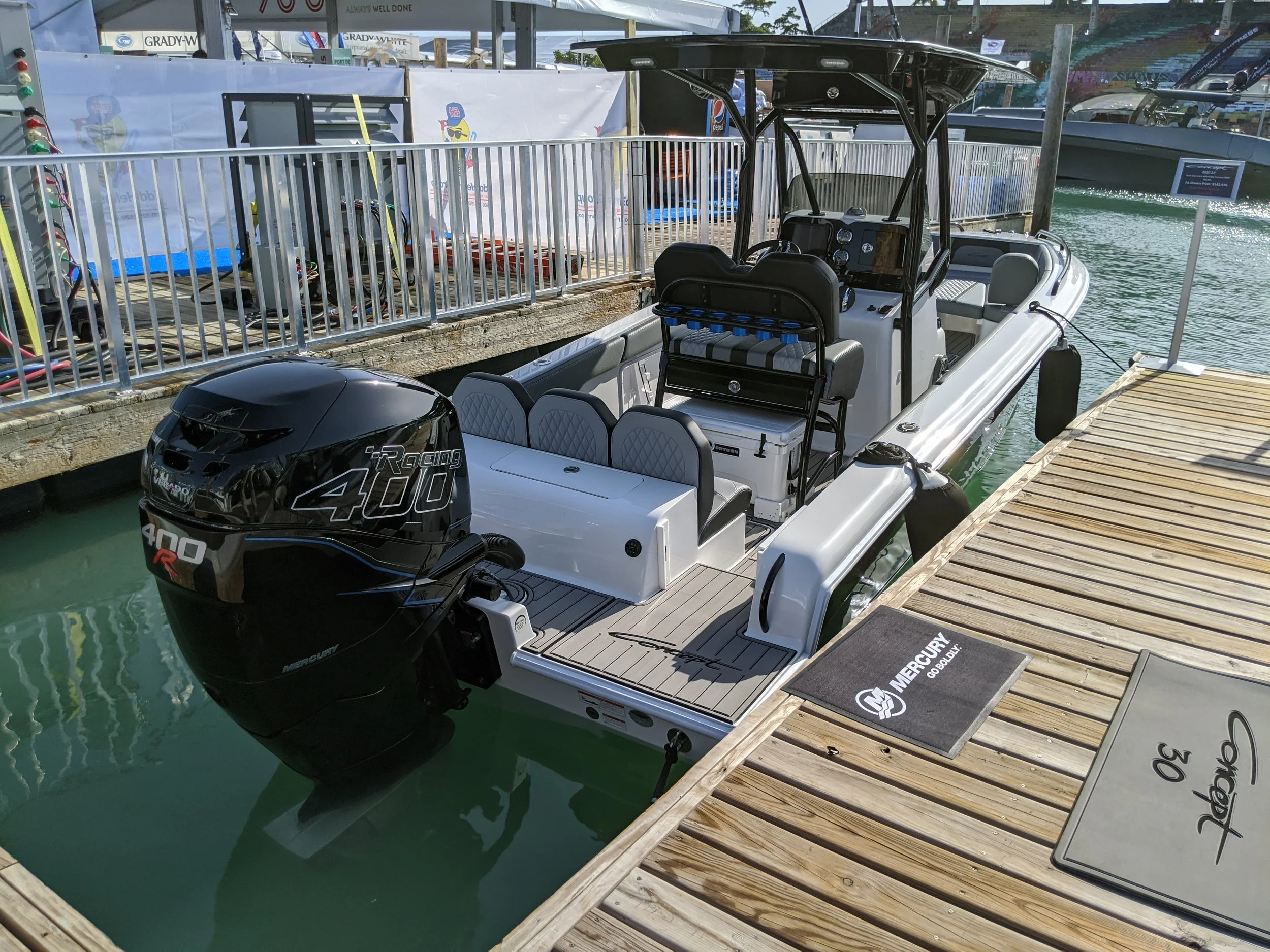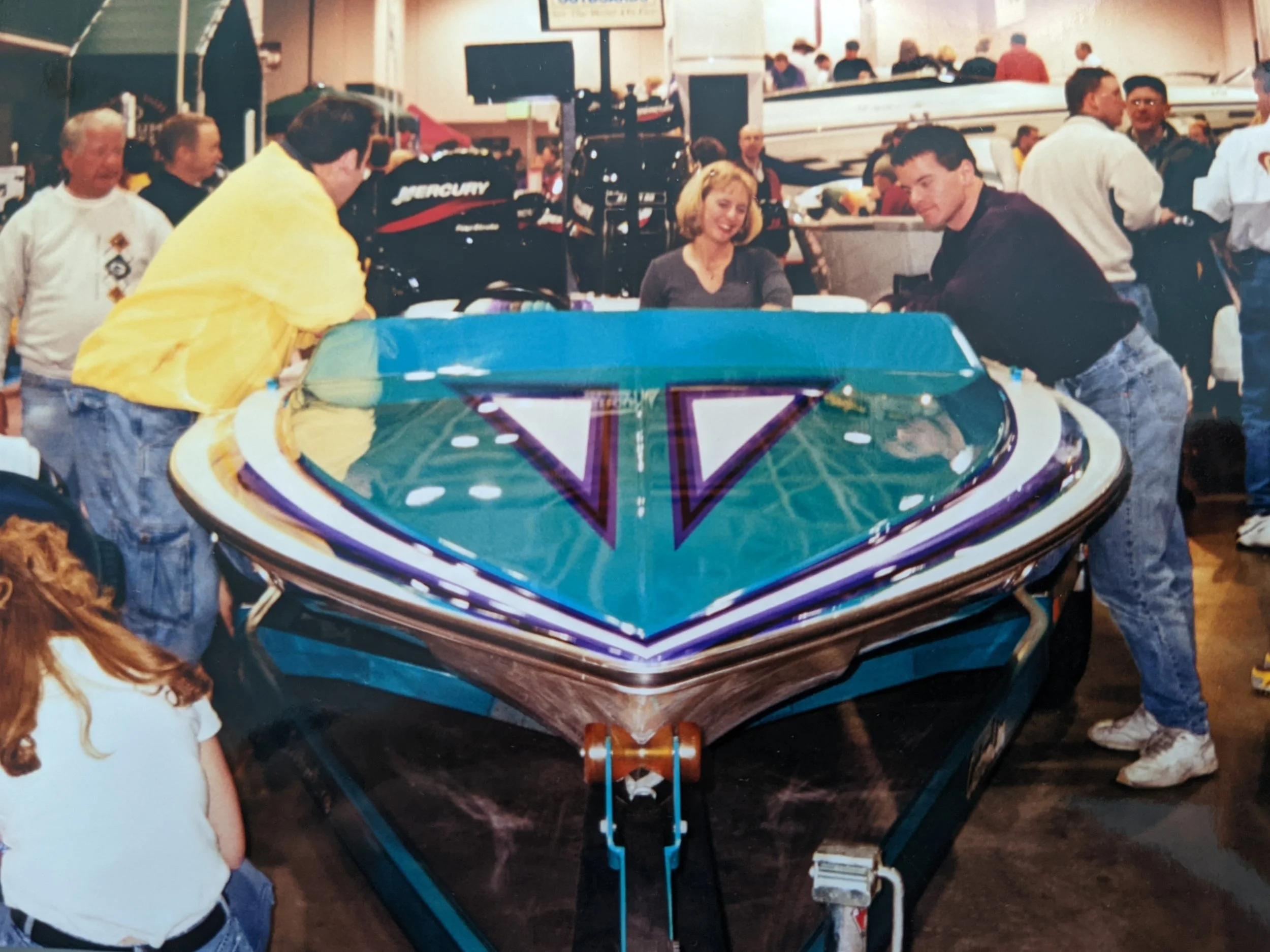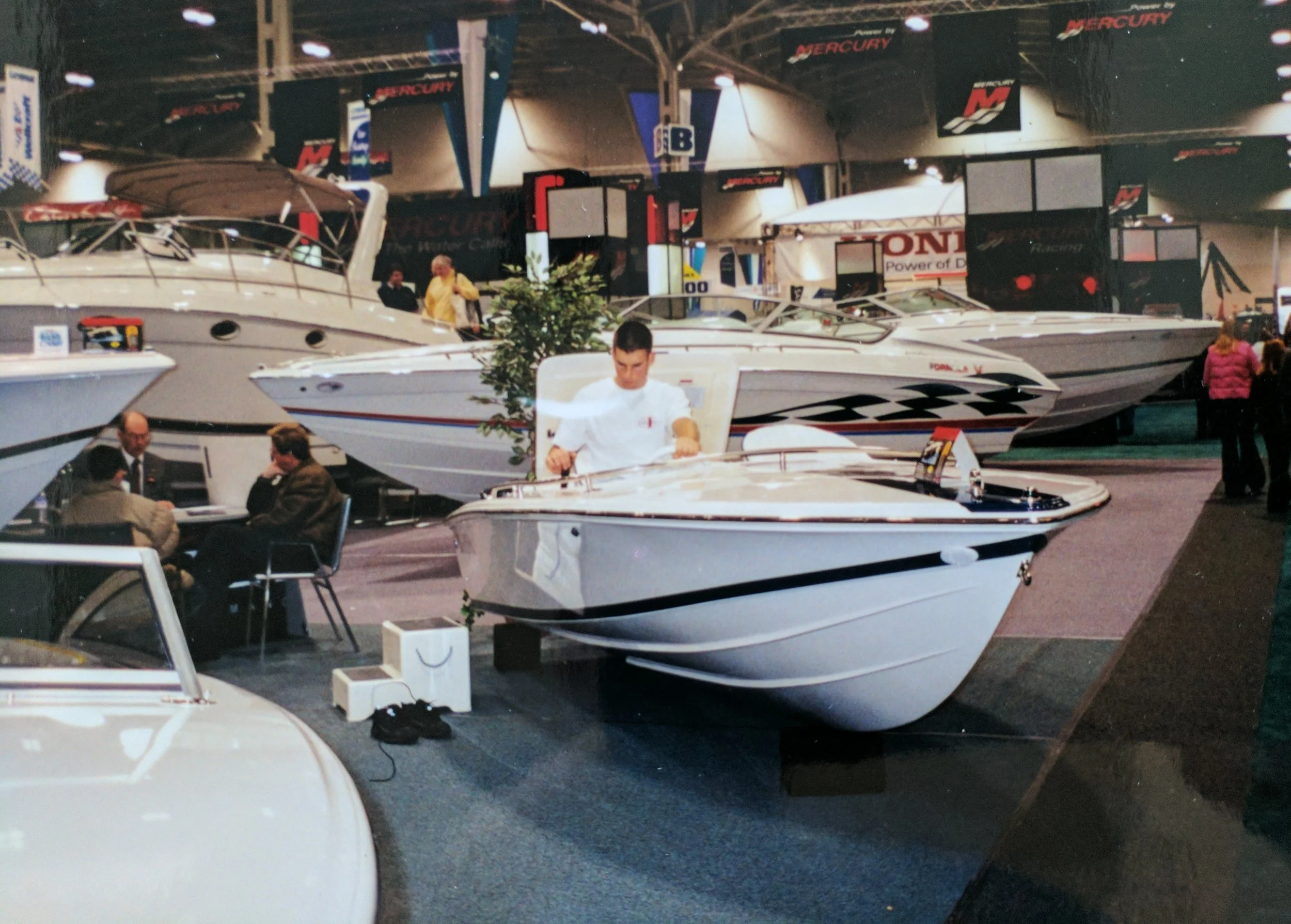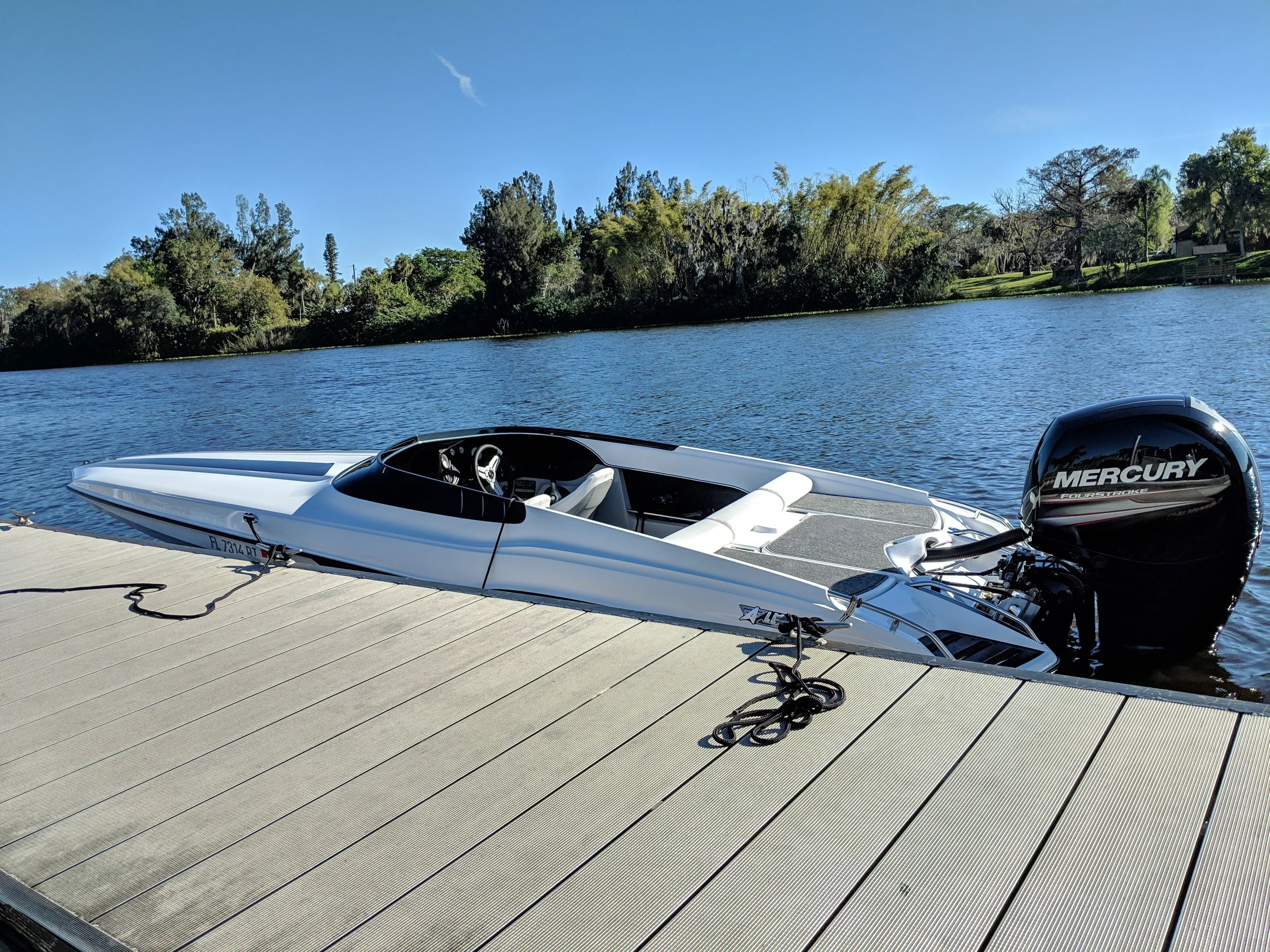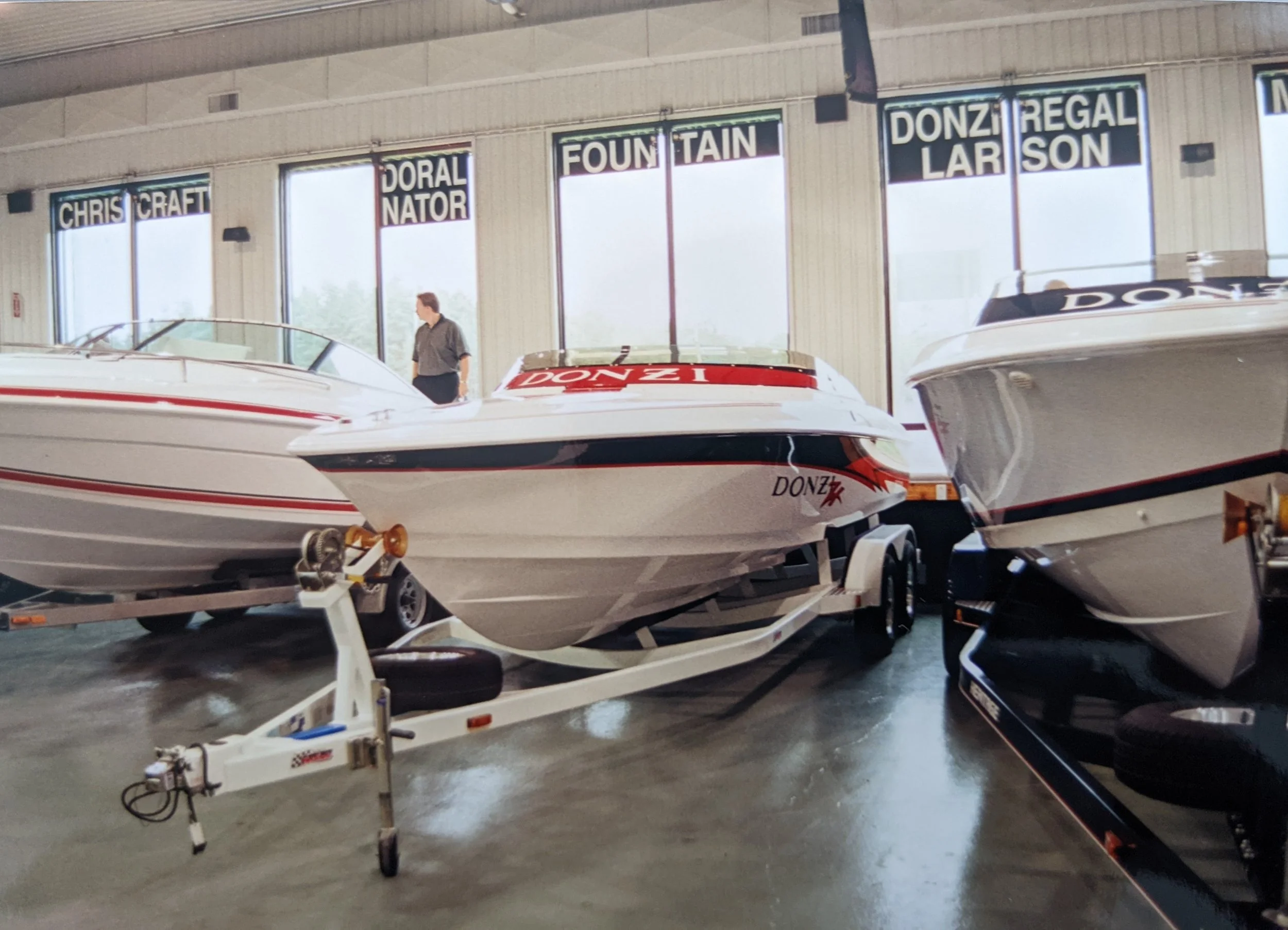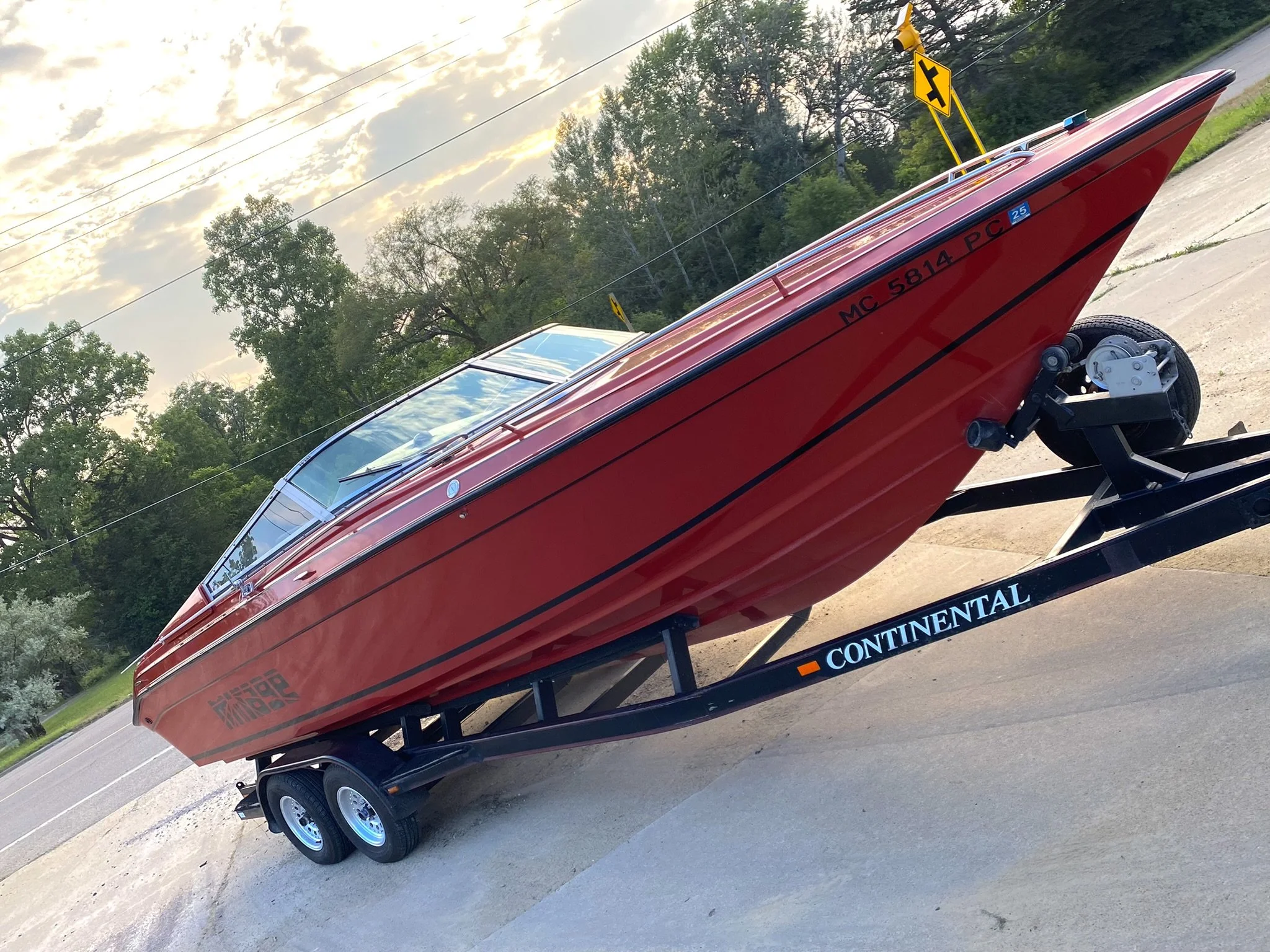What Constitutes an Entry Level Performance Boat in 2025?
In previous decades it was fairly simple to find entry level performance boats, in fact many mainstream builders had something like that, from semi performance sport and ski boats, to family boats that had some performance capabilities. And during the era of 1980 to 2005, some performance brands were quite large; Fountain, Donzi, Baja and Checkmate were sizeable; while Eliminator, Allison, Formula, Hallett, just to name a handful were pretty big. Not to mention the dozens of niche builders like Skater, Laser, Mirage, Hydrostream, Howard, Nordic, STV, DCB the list can go on and on. From coast to coast there were boats for almost any budget, size and level of performance. But today it is much harder to find and even define what an entry level performance boat is, but they do exist in a way.
Stingray offers a 23 OCX sport boat that is offered in closed bow, priced incredibly well at $80,000 to $110k and has reasonable performance with practicality, running in the 70 MPH+ range. Photo credit: Stingray Boats
There are a few factors that changed in the industry and the biggest ones are affordability and liability. The market is also more segregated with so many niche types of boats because consumer demand has changed. Let’s look at what is out there and how these factors affect the current market. I use the term “semi performance” because that’s what most performance boats truly are, the real hardcore performance boats are never really entry level for obvious reasons.
Although the Checkmate brand has recently experienced a tumultuous ownership situation, historically Checkmate has defined this category. Boats that are family friendly, pretty fast, good quality for the low cost. That’s the recipe effectively. They always had a good presence in the small boat category with some moderate success in the mid size range up until the economy collapsed in 2008. The 21 Starflite and later the 21 Pulsare were staples in the entry level family market. The current 2400 BRX was a redesigned 24 Enforcer model from the early 80s. So technically the 21 Pulsare is the latest model they designed in 1992 and is arguably the best boat they have made. There were a couple models between then, but they didn’t sell well.
A Checkmate dealer in the early nineties stocked with 21 Pulsare and 18 Pulse models. Back then, Checkmate was a factory built entry level performance boat, well priced and good value for the performance. A tough business model now.
The beauty of these boats is that you can rig them with engines that are affordable, and that keeps the price reasonable. A 21 Pulsare can run a 200 to 300 HP. With a 225 V6, it’s probably a 75 to 78 MPH boat which is perfect for most people, with a 250R it’s probably in the 85-87 MPH range, making it a little more performance oriented at a reasonable cost. The 2400 is a big boat, heavy and really beamy, it’s never going to be super fast. When rigged with big power, you just get a more expensive boat with mediocre performance. The Sweet spot is probably a 300 ProXS or 300R with a torque master. Boating tested a closed deck version, with a 300R sport master, 27” Bravo One, to 73 MPH. This boat had tabs and the wrong gear case, many people with the 2400 and 300XS could run in the 77 range. Not bad for a big family cruiser. With a 22 degree deadrise and being somewhat heavy, the 24 can run in all sorts of water. In 2021 that boat was $126,000.
Pete Caldwell, me and Ben Robertson in front of one of the last Checkmates built by Caldwell before selling to Velocity recently. You can see the boats got far away from the original Checkmate concept.
For competition, a true entry level family semi performance boat is the Stingray 23 OCX and OSX, closed and open bow respectively. At first glance, you might be surprised, some haven’t even heard of Stingray but it’s a brand that has been around since 1979. And although they aren’t known as a performance brand, the 23 OX models are trying to be a family sport boat and Stingray has always prided itself on having efficient hulls. Founded by Al Fink, the company often could sell models with smaller engines yet still outperformed the competitors. This is actually an overlooked strategy but many manufacturers lack the expertise to design efficient hulls. Glastron did it well in the 80s, Wellcraft to an extent and a few other brands. Stingray Z plane hulls used a simple reverse strake design for better lift and they were relatively light, so with less power would outperform other entry level boats.
How does a 23 OCX compare to a Checkmate 2400? Generally, really well. The Checkmate is going to be finished a little better in some ways but for the money, you would be reasonably impressed with the Stingray. Because they are a much larger manufacturer, their ability to make boats is far superior, they have a 225,000 sq ft facility in South Carolina and make hundreds of boats a year. With a simple 20 degree deadrise V, about 2,700 Lb dry weight, and a big 100” beam, the 23 is a family hauler.
A cuddy cabin and decent seating layout for a family boat. Modern family boats have a tendency to want to pack as many people as possible in them, which isn’t usually a great design idea. Photo courtesy of Stingray Boat.
The Stingray 23 will run 71 MPH with a Yamaha 300 25” mid, and a Yamaha SS Pro 23” prop with the gearcase buried. They bolt it straight to the transom, the hull has setback built in but with any setup and a different prop, this hull could easily be in the mid 70s. A 250 SHO XL with the same prop runs 66 MPH, but again, that’s a really conservative setup. A jack plate, running a 20” mid and raising it up with a 24-26” prop should get you a lot more speed.
Stingray isn’t concerned with squeezing every last MPH out of it, the 23 footer can be had from $80,000 with a 250, up to $102k with a 300 Yamaha. The closed bow is a few thousand more, Suzuki and Mercury are options. My opinion is the value is great, the performance is decent and could be improved. Looks are subjective but it looks really good for a general market boat. Where the Checkmate can be had in some custom colors, the Stingray comes in an array of standard colors. The Checkmates I saw recently had a pretty basic interior, with lower quality seats than earlier ones when it was owned by Bill Combs and later Hustler. And the gelcoat finish Checkmate was known for changed to paint, which is not a bad move necessarily.
This Checkmate is from the Hustler era with the original in house interior department, and a full frame windshield. These were gelcoat finish and priced really well. They used balsa core, and a more traditional layup, which is great in this category of boat.
If you want a lot more performance but want to keep the size of boat and price within reason, brands like Tuff Marine, Velocity, Eliminator, Trick, Nordic and Progression. These are all low production, custom boats and yet, depending on the size and power could be considered entry level in some ways, although with the right power the performance can be extreme. In a smaller boat, over 100 MPH is getting far away from entry level. There a handful of other very niche builders that make other 20 to 25’ “entry level boats.” Again, entry level is a little subjective, a combination of price, performance and size. But the nomenclature isn’t derogatory at all. Some consider the lowest cost mid engine Ferrari “entry level” which it is in the Ferrari lineup.
The Tuff 25 is a whole different world of performance compared to the previous boats mentioned. Sophisticated design, incredible quality and blistering speeds. Yet, the 2+3 layout and size make it really practical. Run 100+ MPH easily with a 300 HP, cruise all day at 70 MPH with a few friends. Available as an OB or sterndrive, make it one of the ultimate sport boats in this size range. Light weight versions can get into the 115 MPH territory with big power.
Tuff Marine makes a 16 that is an incredible little hot rod for young people or just someone wants a small boat that does up to 60 MPH with a 60HP. The Tuff 20 is a beautiful example of a perfect size that can run a 150 to 225 HP engine, making a reasonable price point that gets you into the 85 MPH range in a very usable size boat. Their 25 is also reasonable with a 250 HP, and can be an absolute missile with a 300+ HP outboard or big power stern drive; it’s a super versatile size and stunning boat. Tuff is known for incredible performance numbers, I wouldn’t call the 25 “entry level” but I’d say with a 250, someone could run it as a family boat, that also just rips, and is a very custom boat priced fairly.
Size and price are a factory for entry level, the Tuff 16 is definitely the coolest 16 out there. And, with a 60 HP gets around 60 MPH.
Velocity can make a 22, 23 and a 26 that is custom and really fast. The prices are very contingent on how it’s rigged, like all boats. Small builders tend to have to be able to cater to the customer because there just aren’t that many customers anymore. But, when I was growing up, a 200 or 225 on a 22’ boat was a really nice setup in most cases. A 22 Velocity with a 250R would be really nice and get you about a $10k saving over a 300R version.
Eliminator has made a couple really cool 21 Daytona’s with a 300R in the last couple of years and the 25 Speedster is a versatile boat that can run a single, twins or a big sterndrive. Nordic is another builder out west in Arizona who makes a 21 OB called the cyclone / crossfire, and they make a 22 Evolution V-hull and a 24 SX center pod tunnel that is really practical. The Nordic 25 Rage is a great mid size boat that is really accessible. There are a few other custom builders out west.
Nordic boats makes several compact sport boats, like this 25 Rage. Great quality and something for almost everyone. The used market is great for sterndrive sport boats like this if you’re looking for value.
We recently featured a 22 Progression, a small builder in Long Island and they have been around for decades. ( Progression 22 Article ) A very traditional look with a deep V pad bottom, a 22 Progression can actually run really nice with a 200 or 225, although you see many with a 300. They can be a nice pleasure boat or rigged to be a bracket 700 race boat. Is it “entry level.” Yes, if you had a pleasure version with a 225 or 250, it’s priced well and would be a great little boat for any bay or lake. The 24 Progression is perfect for a 300R.
Also, the cat market is really strong. Jeff Haag restarted Trick Powerboats with a cutting edge new 23 Cat that is really doing well. I wrote about this boat recently (Trick Powerboats) and visited the factory, this is a great story about focusing on a specific market and delivering something new and innovative. Success in any market is the ability to adapt to your customers. The companies that really struggle are usually still building the same old stuff, that’s part of the reason why Checkmate has struggled to regain it’s former success.
The Trick Powerboats 23 is a fresh design and a killer package. A single 300R gets you close to 100 MPH, and is priced very well. It is no surprise the wait list is long.
The elephant in the room is the performance fishing boat market and center console bay boat market that absolutely absorbed the entry level go fast market. You can rationalize more easily a semi performance center console for the family, and especially if you are into fishing. Most people can’t afford one boat, let alone two. So if it comes down to it, a fishing boat that goes fast is a really captivating market. You can get incredibly deals on factory built bass boats that are ready to fish on a trailer, and run 70+ MPH. No custom builder can compete on price.
There are dozens of builders who make performance fishing boats from bass to bay, you can find pad V hulls like Land and Bay that fly, to flats boats, to this Carrera center pod flats boat. Multi use make buying a boat more practical for many.
Baja was once the quintessential entry level performance boat with models in every size range, but they didn’t really pivot when the market changed and they were stuck making sterndrive boats that weren’t great designs. They died quite quickly. In the nineties you could get a 20’ Baja Hammer model with a trailer and a 260 MerCruiser for an incredibly low price. The 25 Outlaw was a very popular entry level hull with deeper deadrise and nice look. If management could have pivoted to a different market quickly, they probably could have survived.
A Baja Hammer at the Chicago dealer show in the early nineties. That’s me in there. Baja was the epitome of low cost, entry level performance. Later on the designs just weren’t that great and the smaller hulls didn’t perform. The 20 Outlaw was very cheap but not a great boat. Some Baja’s are really cool looking and some of the larger Outlaws were decent performers.
I can’t list all the manufacturers, but as an example, you can get a 27 Concept CC with a single 400R, that is great in rough water, you could fish out of it, and run to a sand bar while being towable. That customer may have bought a performance sport boat in the past, but that’s the market now. Allison boats makes fishing boats exclusively now, that are absolutely high performance and many customers don’t even fish that much, but they are practical and multi use. Allion’s heart is in racing and performance sport boats, but business is business.
This customer 15 years ago might have been buying a Fountain or a Donzi, maybe something even more performance oriented but this 27 Concept can do a lot more on the water as a family day boat and still have some speed. Center Console performance boats really took off, the practical nature and outboard power are part of it.
So to add to the argument, yes, “entry level” performance boats do exist and it’s a range based on price, level of performance and size. I would also add versatility. Sport boats are specific breed, and many of those customers have partitioned to fishing, center console, and possibly gotten out of performance and into water sports boats. The power and cost of engines now is a big factor as well. There is a great argument to be made just to put less power on a boat and use mechanical rigging and basic gauges. Of course, you may have to add your own touches to those engines to make them more performance oriented; nose cones and mounts. Lots of performance lies in the setup, something beginner boaters have a hard time grasping, adding big power to slow boats is a bad idea. The design and ability to handle certain speeds is critical.
This is from a boat show in the 90s, boats like Triad, Allison, STV, Hydrostream and others were well designed and small, they only needed a 200 or 225 to be rockets. 90 MPH to 100 MPH in a 19’ boat is not for the faint of heart and not really entry level from a driving perspective. Cats and center pods are popular because they are much easier to drive than a pad V.
There is one thing I will add, the performance boat market in general is very niche. The entire performance boat world is a very small world so it is an incredibly hard market to be in. Many of the manufacturers I listed are small family operations. For this, I have the utmost respect for builders. Some of the most storied builders we know are tiny companies that have very tough years when the economy is not great or the market shifts. Fountain was once a public company, which was overly ambitious, and probably one of the many reasons it went under, while Baja was among the top selling brands for a time when owned by Brunswick yet still not a huge business. The performance boat world is truly driven by passion and dedication. There are some “entry level” performance boats out there, but you can see why restorations are still pretty common if you want something you really can’t find.
The Mercury Racing outboard lineup back in the 90s was much more hardcore and accessible in a way, from the 300X, 200XS and the 2.5, you had lightweight power with all the ingredients.
Me in a Donzi 16, which started and defined a new era of entry level performance, proving that small boats are more fun and really cool. You can see a Formula 271 in the background. Performance was mainstream back then.
By modifying a Mercury 150 with a nosecone and mounts, the Allison Grand Sport is a really fast, 80+ MPH boat that was really inexpensive. Size, performance and cost all define entry level. I wouldn’t say any Allison is entry level in the skill needed to drive them though.


